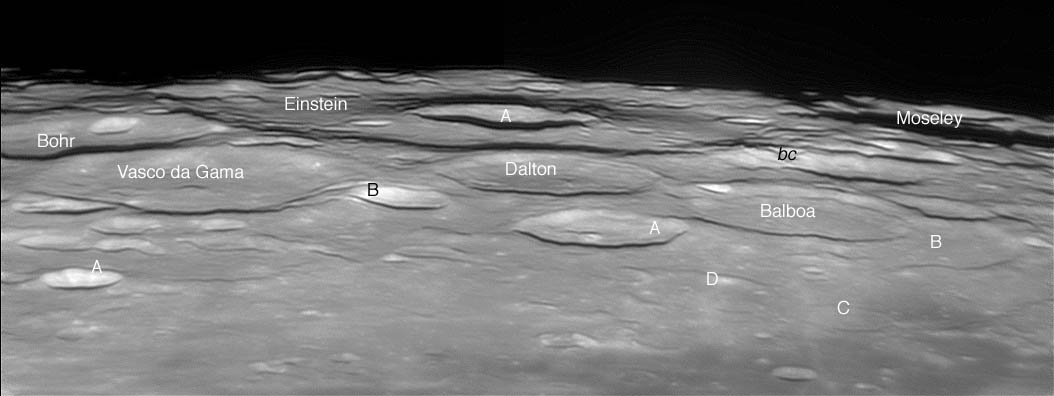
image by Damian Peach
THIS IS A REPEAT OF THE MAY 19, 2005 LPOD
The eastern limb of the Moon is often imaged, perhaps because it is readily available in the early evening hours. But the western limb - which at sunrise is also visible at a convenient time, is much less commonly imaged, especially the areas north of Orientale. Damian Peach’s recent image shows what can be seen on this limb when the lighting, seeing and libration all cooperate. At the center is the rarely seen Einstein crater with Einstein A near its center. The formation of A probably removed Einstein’s central peak, for with a diameter of 170 km Einstein is too small to be expected to have an inner ring. The other craters named on the mouseover are also infrequently observed, and I’ve never before seen an image of Moseley (I think I’ve identified it correctly) at 90.1° West. The high sun Clementine Atlas image (Plate 37) shows a very bright small crater near the NE rim of Einstein (bc on overlay) that doesn’t look like much in this unrectified low sun view. But at higher illuminations it must be a searchlight! Einstein and most of the larger craters in this area are smothered in continuous ejecta deposits from Orientale (off the image to the left) and most of the small fresh craters are Orientale secondaries.
Technical Details:
April 24, 2005. C9.25" from a beautiful southern Caribbean vacation isle!
Related Links:
Lunar Orbiter 4 View
Rukl Plate 17
Yesterday's LPOD: Is it Love or a Sinus Infection?
Tomorrow's LPOD: Rima Weird
COMMENTS?
Register, Log in, and join in the comments.



